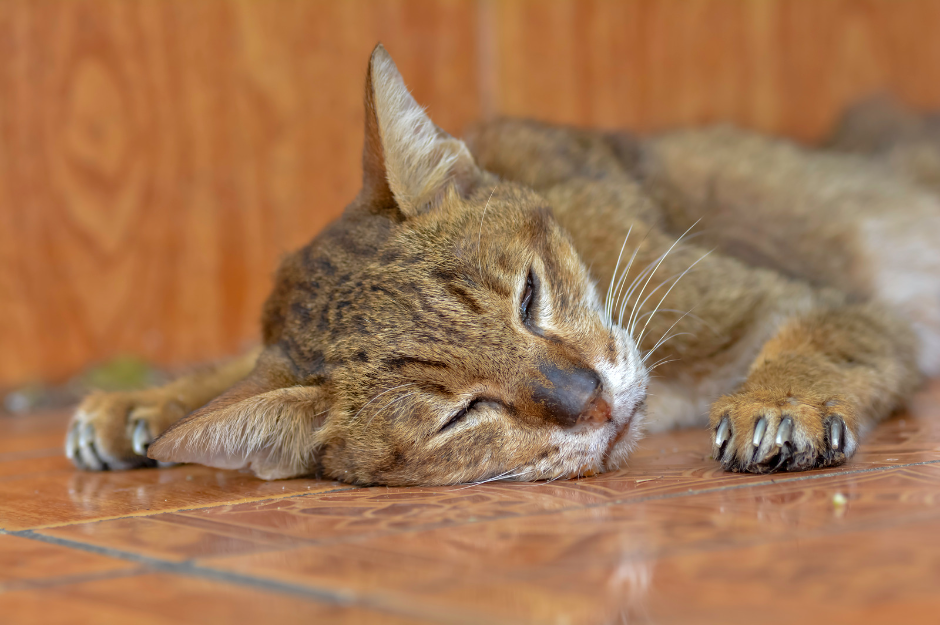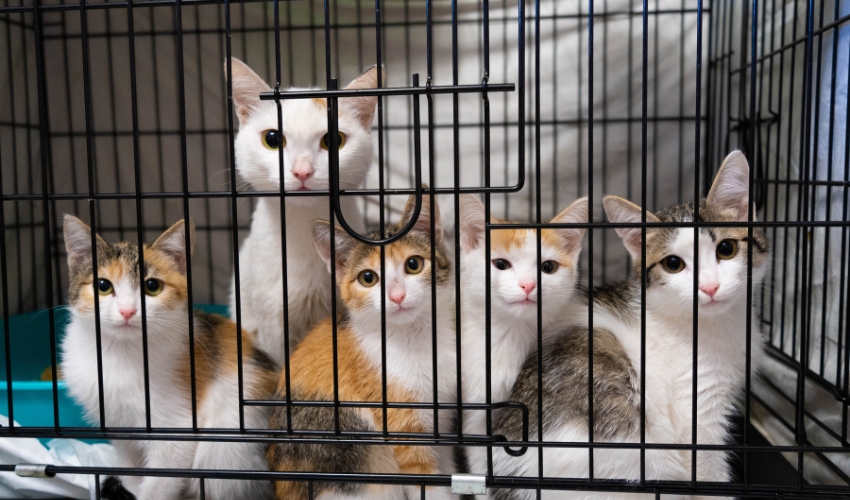Cats are not excused from developing cancer. In fact, more than 6 million cats are diagnosed with cancer every year. Among the most common types of cancer found in felines are lymphoma (affecting the white blood cells), squamous cell carcinoma (skin cancer), and mammary carcinoma (affecting the mammary gland). Although not as common, cats may also develop pancreatic cancer. This blog will particularly discuss everything you need to know about pancreatic cancer in cats, including its causes, symptoms, diagnosis, treatment options, and prevention tips.
What is Pancreatic Cancer in Cats?
When a cat is diagnosed with pancreatic cancer, it means that the veterinarian has found signs of malignant tumors or abnormal cell growth in the pancreas of the cat. This tumor is called an adenocarcinoma. Adenocarcinomas typically develop from the exocrine cells of the pancreas, which are responsible for producing digestive enzymes.
Pancreatic cancer in cats is rare and accounts for less than 2% of all feline cancer cases. However, it can grow rapidly and aggressively, leading to complications in the cat’s digestive system. In some cases, the tumor can spread to other parts of the body, such as the liver and lungs.
Causes and Risk Factors of Pancreatic Cancer in Cats
The exact cause of pancreatic cancer in cats is still unknown, but there are some factors that may increase a cat’s risk of developing this type of cancer. Some of these factors include age, genetics, obesity, chronic pancreatitis (inflammation of the pancreas), exposure to carcinogenic substances, and a weakened immune system.
In particular, older cats are more prone to develop pancreatic cancer, with the average age of diagnosis being around 10 years old. It is also observed to be more common among male cats and Siamese cats. Those diagnosed with diabetes mellitus are also at a higher risk of developing pancreatic cancer.
Symptoms of Pancreatic Cancer in Cats
The symptoms of pancreatic cancer in cats can be vague and non-specific, making it challenging to diagnose the disease at an early stage. Some common symptoms of pancreatic cancer in cats include:
- loss of appetite
- weight loss
- vomiting
- lethargy
- jaundice (yellowing of the eyes and skin)
- abdominal pain or discomfort
- palpable abdominal mass
- diarrhea
- constipation
- behavioral changes
Most of these symptoms are also associated with other health conditions, which is why it’s best to consult a veterinarian to make a proper diagnosis.
Diagnosing Pancreatic Cancer in Cats
To diagnose pancreatic cancer in cats, a veterinarian will typically perform a physical exam and run various diagnostic tests, which may include blood work, urinalysis, abdominal ultrasound or X-rays, and a biopsy of the pancreas for further analysis. In some cases, a CT scan or MRI may also be necessary to confirm the diagnosis and determine the extent of the tumor.
Treatment Options for Cats with Pancreatic Cancer
Treatment options for cats with pancreatic cancer depend on the severity of the disease and how far it has progressed. Following are the treatment options that a pet owner may expect:
Surgery
Surgery is the most common treatment option for pancreatic cancer in cats, especially if the cancer is localized and hasn’t spread to other organs. During surgery, the veterinarian will remove as much of the tumor as possible and may also remove nearby lymph nodes to prevent the spread of cancer cells. Following the surgery, the cat may need to stay in the hospital for a few days to recover and receive supportive care.
Chemotherapy
Chemotherapy may also be recommended for cats with pancreatic cancer, especially if the tumor has spread to other organs or if surgery is not an option. Chemotherapy can be administered orally or through injections and works by destroying cancer cells throughout the body. Chemotherapy can have side effects, such as nausea, vomiting, and loss of appetite, but these can often be managed with medication and supportive care.
Radiation Therapy
Radiation therapy may also be used to treat pancreatic cancer in cats, either alone or in combination with surgery and/or chemotherapy. During radiation therapy, high-energy beams are used to target and destroy cancer cells in the pancreas. Side effects of radiation therapy can include diarrhea, vomiting, fatigue, and skin irritation, but these side effects are usually mild and can be managed with medication and supportive care.
Prognosis for Cats with Pancreatic Cancer

The prognosis for cats with pancreatic cancer depends on several factors, including the stage of the disease at diagnosis, the cat’s overall health and age, and the treatment received. Unfortunately, pancreatic cancer often goes undetected until the disease is already at its late stage and the adenocarcinoma has already metastasized into the cat’s liver, lymph nodes, or peritoneum. In such cases, cats usually last only a few days or weeks more, at most 30 days. Because of this, many pet owners often decide to euthanize their cats. However, those who underwent surgery and chemotherapy are generally able to survive about 165 more days. If detected and diagnosed early, before the tumor begins to metastasize and was able to undergo surgery, the cat is still expected to last only about a year.











